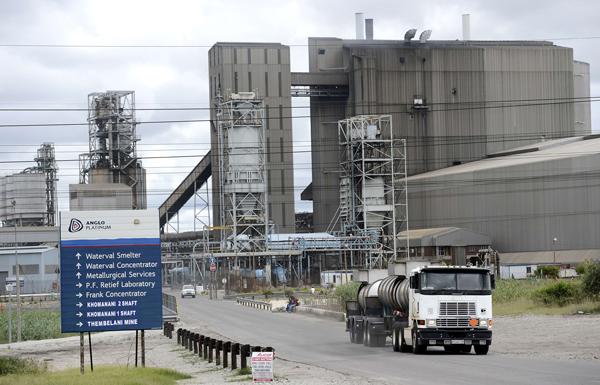You are here
Iron ore miners battle for survival
By AFP - Sep 28,2014 - Last updated at Sep 28,2014
SYDNEY — High-cost Australian miners are battling for survival as plunging iron ore prices push many to breaking point, with analysts seeing no significant short-term recovery as Chinese demand for steel wanes in line with sliding property prices.
Australia, the world's largest exporter of iron ore, is heavily dependent on China's hunger for resources even as its economy transitions away from an unprecedented mining investment boom.
A year ago, iron ore fetched about $135 a tonne. This month it hit a five-year low of $81.90, slumping 40 per cent since January.
The weaker price has also hit Australian government coffers, reducing tax revenue just as it makes a push to bring the budget back into surplus.
Australia produces 17 per cent of the global iron ore, second only to China's output of 39 per cent.
"I think the iron ore market's got a perfect storm at the moment," ANZ's global head of commodity research Mark Pervan told AFP.
Australian junior miners Termite Resources and Western Desert Resources — which operate at a much higher cost than majors BHP Billiton, Rio Tinto and Vale — have already collapsed, and there are fears others could follow.
On the supply side, record levels of iron ore production in Australia from the world's largest miners BHP and Rio have pushed millions more tonnes into the global market.
But demand from China has weakened as the property market softens. New home prices have fallen for four straight months, according to Chinese data, weighing on steelmakers that depend on the sector as a "pillar industry", Pervan said.
While the Australian jump in supply — driven by strong prices three years ago — was forecast, the continued output from Chinese miners has exacerbated the price decline.
The plunge in the iron ore price has been so severe that Goldman Sachs this month called it "the end of the Iron Age".
In a research note, analysts Christian Lelong and Amber Cai wrote that "in our view, 2014 is the inflection point where new production capacity finally catches up with demand growth, and profit margins begin their reversion to the historical mean".
"In other words, the end of the Iron Age is here," they remarked.
According to Lelong and Cai, the "weak demand outlook in China and the structural nature of the surplus make a recovery unlikely".
Despite the tough environment, BHP and Rio, as low-cost producers, are still raking in large profits.
The falling prices could also help them by removing smaller competitors, UBS global commodity analyst Daniel Morgan said.
Related Articles
LONDON — Global mining giant Anglo American announced Tuesday a "radical" restructuring of the firm that will slash its workforce by almost
SYDNEY — Global miners are battling to stay afloat after enduring one of the toughest years in recent times, with tumbling commodity prices
SYDNEY — Mining giant BHP reported an 86 per cent slump in half-year net profit on Tuesday, hit by a writedown of its nickel assets and cost


















